Report and Support Second ReportMore detailed data insights
Who used Report and Support?
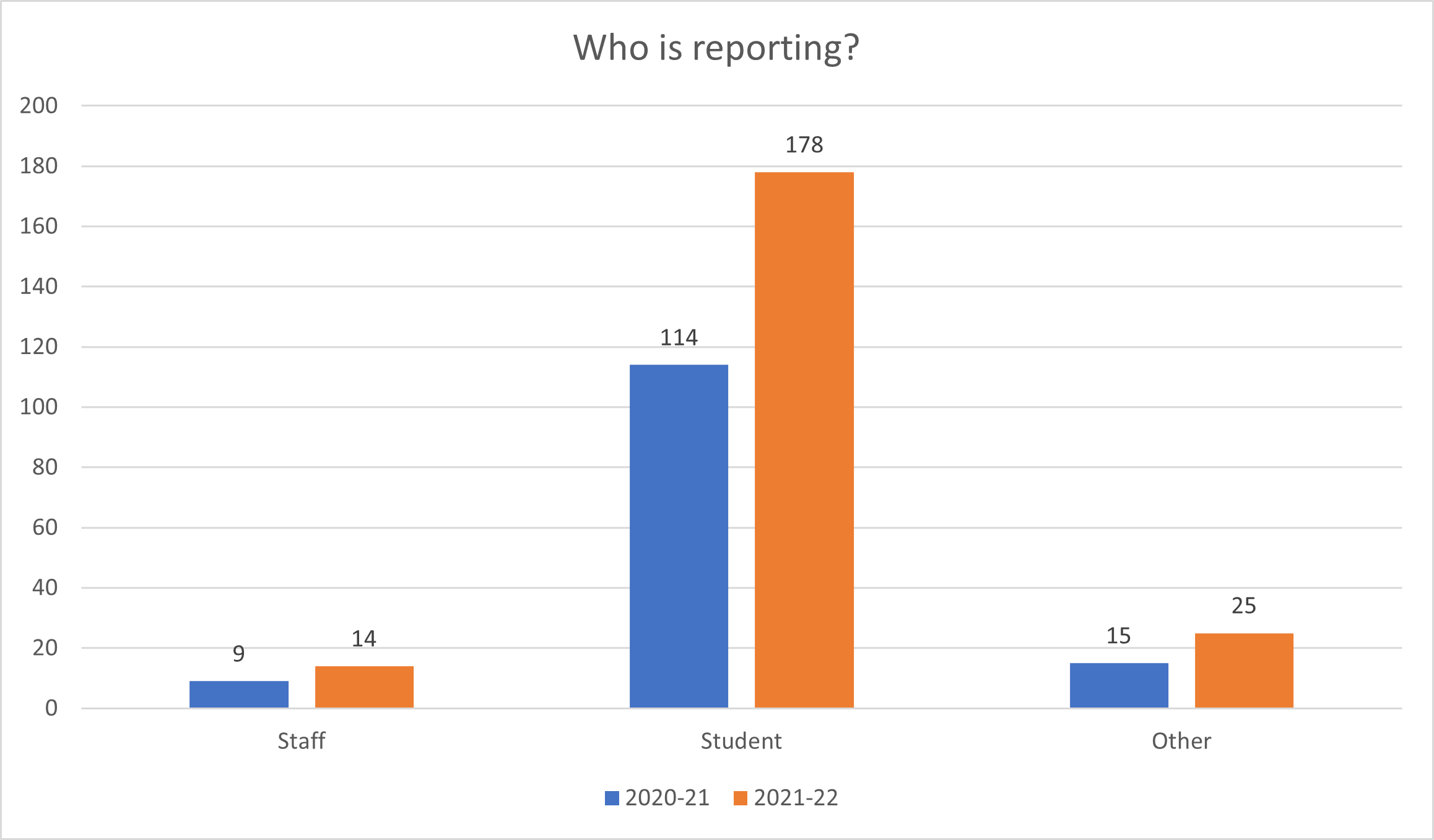
Students submitted most reports in both years. For both academic years, students made up 79% of the University population with (FTE (full time equivalent)) 10,420 students and 2734 staff in 2020-1 and (FTE) 10,729 students and 2801 staff in 2021-2.
What are people reporting?
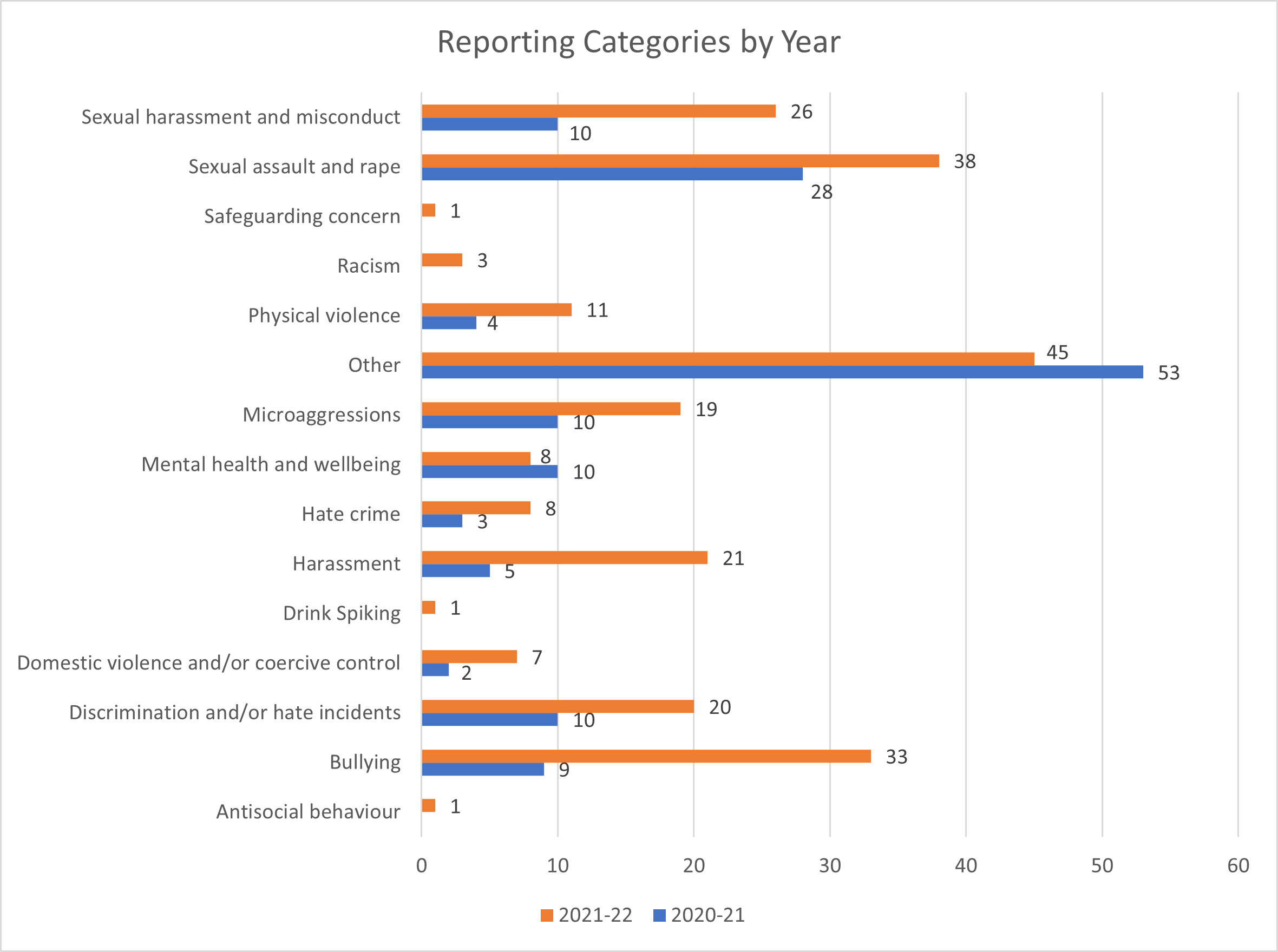
Reporters select a category that best describes the situation about which their report relates. Since the addition of new categories in May and June 2022, the number of reporters opting for ‘Other’ has significantly decreased. Between end of June and end of August ‘Other’ was not chosen by reporters. We believe that the addition of new categories has contributed to this reduction.
How are people reporting?
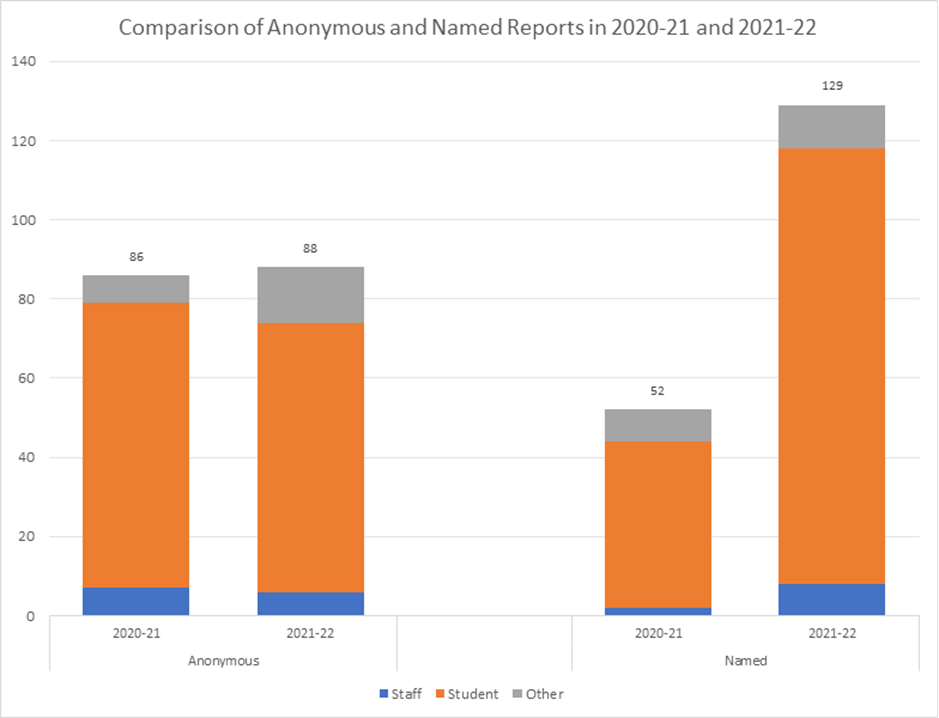
Reporters have the option to report with contact details or anonymously. Named reports have increased overall from 70 for 2020-1 to 101 from the same period in 2021-2 (November to end of August). This may be because the reporter can now choose to switch from reporting anonymously to reporting with contact details without loss of information. It may also be a result of increased trust in the reporting system. Students submitted most reports in both anonymous (77%) and named (85%) reports. For 2020-1, students submitted 84% of anonymous reports and 81% of named reports.
What were the reasons for anonymity?

Reporters can choose one or more of the above options as reasons for anonymity. The second most common response for both years was ‘concern about the repercussions for themselves or others,’ representing 12% of total selections in 2020-1 and 11.6% in 2021-2.
What is the location of incidents?
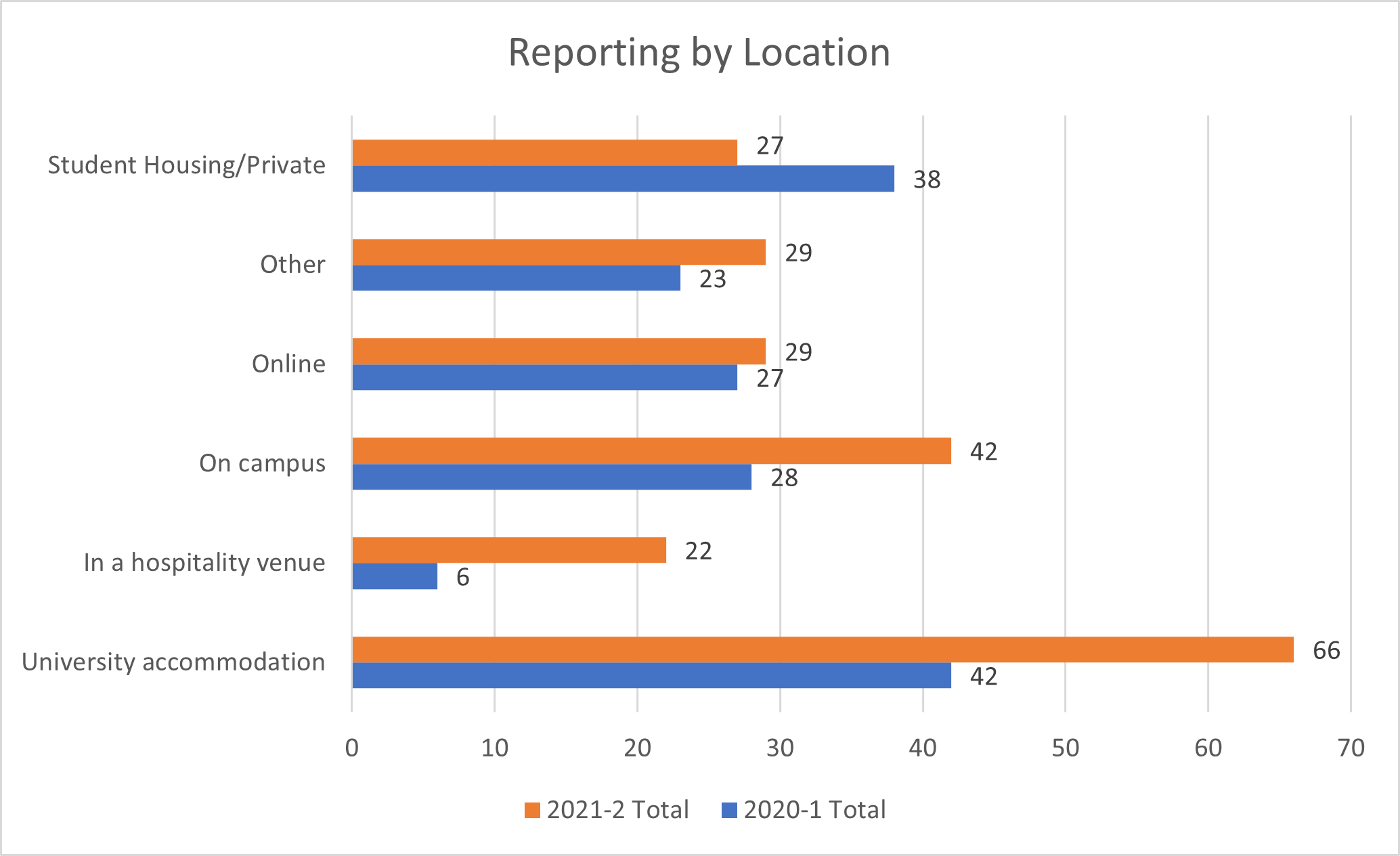
Reporters can choose from the options above to report location. University accommodation is sub-divided into specific halls within the report itself. The biggest proportional increase of incidents occurred ‘In a hospitality venue.’ Reports went from 3.7% (6) in 2020-1 to 10.2% (22) in 2021-2.
As University Accommodation was the most frequently selected location of incident, in both reporting years, Student Services trained the wardennial team in LISTEN training, which is designed to support those who disclose GBV. During the session, supporting people who make other disclosures, such as racism and hate crime/discrimination was also considered as the LISTEN model is applicable to other contexts. Report and Support is widely promoted by staff in residences.
What were the reporting outcomes?
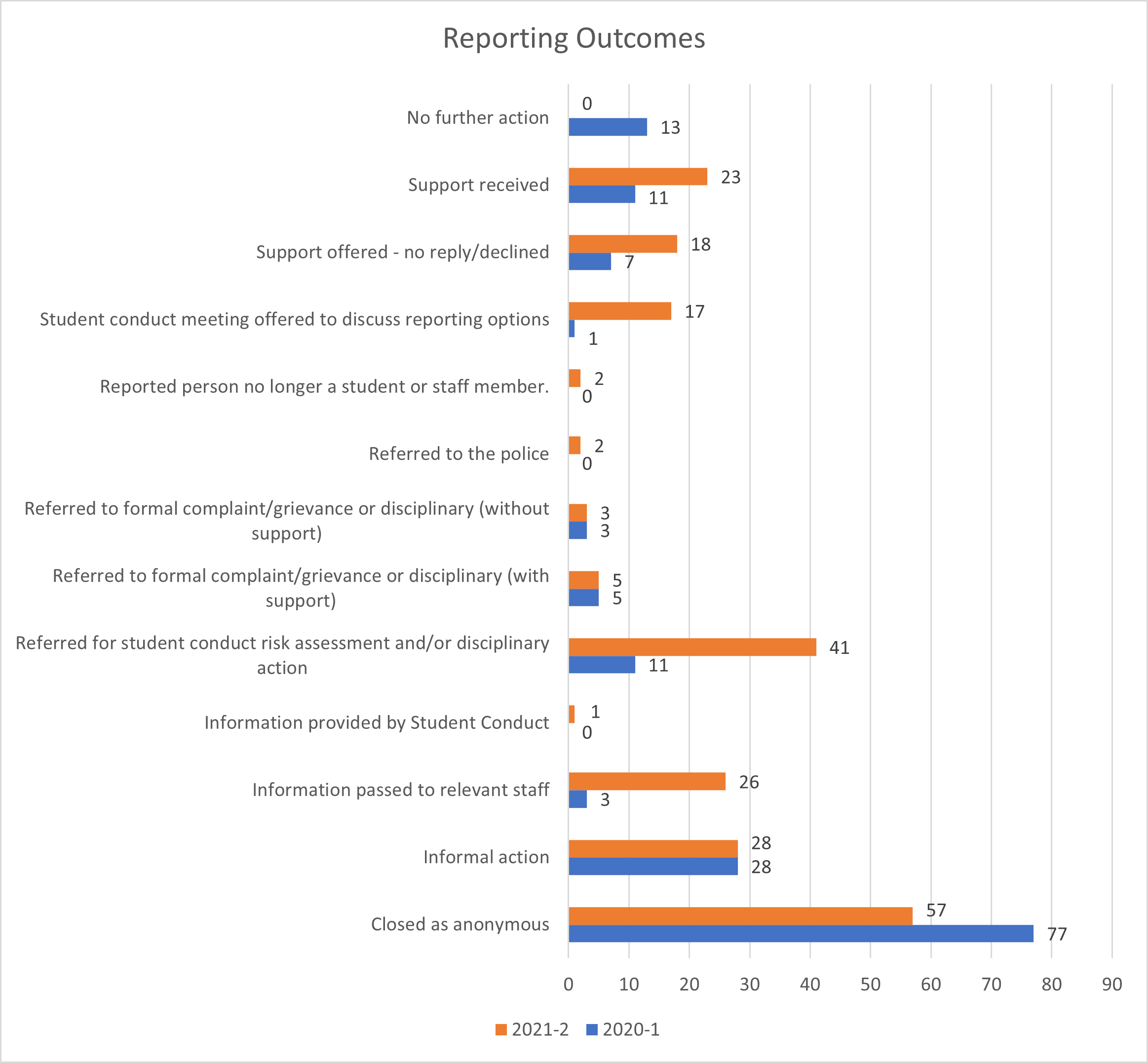
Report outcomes are selected by staff in Student Services, Conduct and HR after receiving the report. Staff can and do contact reporters who give contact details, with information about their options. Responding to anonymous reports is more difficult, sometimes there is insufficient information to act.
The ability to submit and review anonymous reports is a key feature of Report and Support. The comprehensive information available on the support pages of the Report and Support tool is important as an up-to-date central repository of assistance to all. Anonymous reports can sometimes offer insights into potential clusters of negative behaviours and will protect the identity of the reporter.
There has been an increase from 6.9% in 2020-1 to 18.4% in 2021-2 of reports ‘referred for student conduct risk assessment and/or disciplinary action’. Of the named reports, ‘Referred for student conduct risk assessment and/or disciplinary action’ was the largest outcome in 2021-2 with 30.4% or 38 reports. This is an increase from 16.9% (9) of reports in 2020-1.
In listening to reporters and staff dealing with reports, we noted a difference in the understanding of the ‘No further action’ outcome used in the first report. Whilst reporters believed it meant that nothing had been done with the report, staff understood it to mean that after consideration and action, they had done everything they could. To prevent further misunderstanding, we added new categories that reflected the work undertaken, e.g., ‘Student conduct meeting offered to discuss reporting options,’ or we provided the reason staff could no longer progress the matter e.g., ‘Reported person no longer a student or staff member.’ This work resulted in a drop in ‘No further action’ outcomes from 8.2% (13 reports) in 2020-1 to 0 for 2021-2.